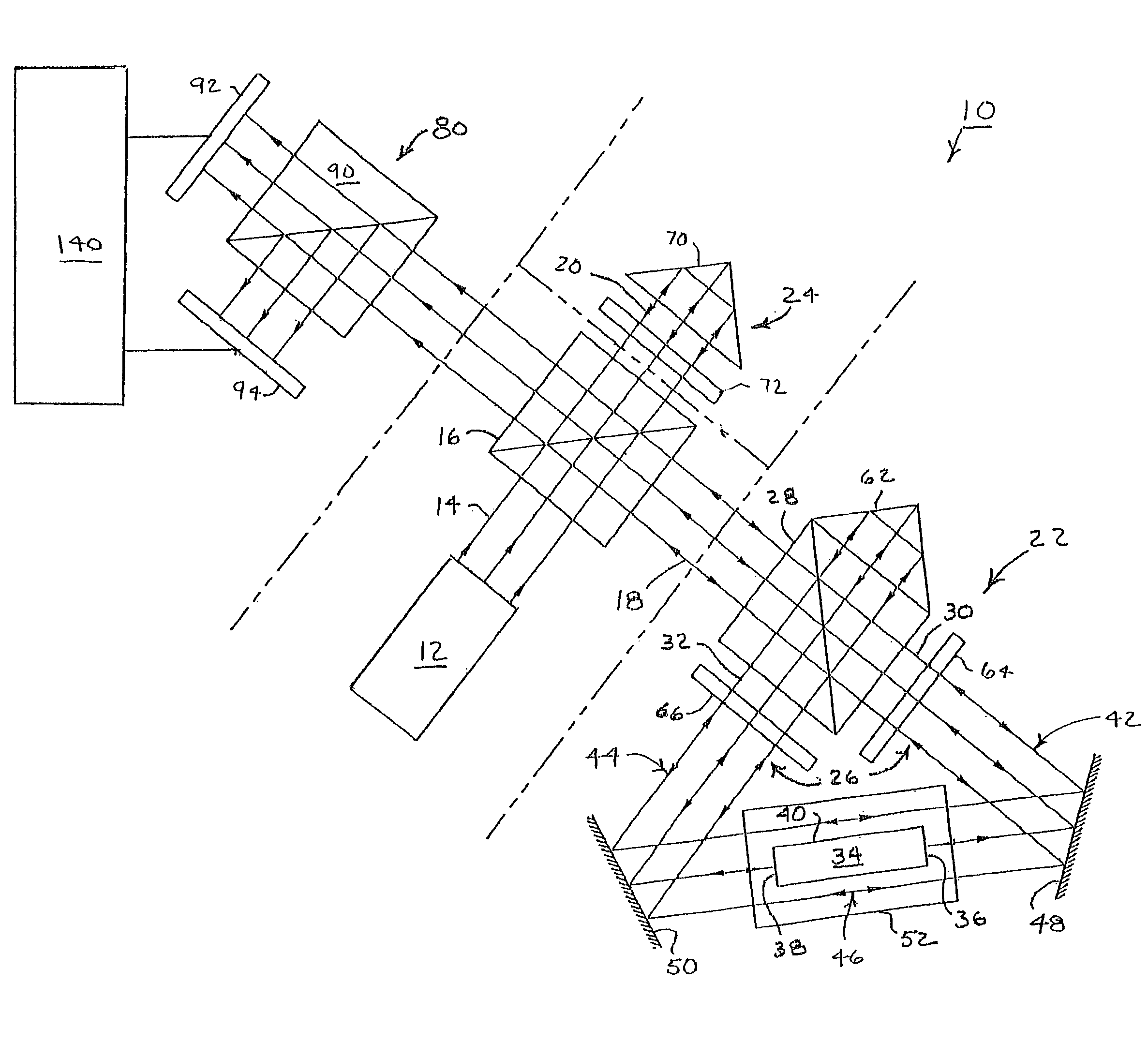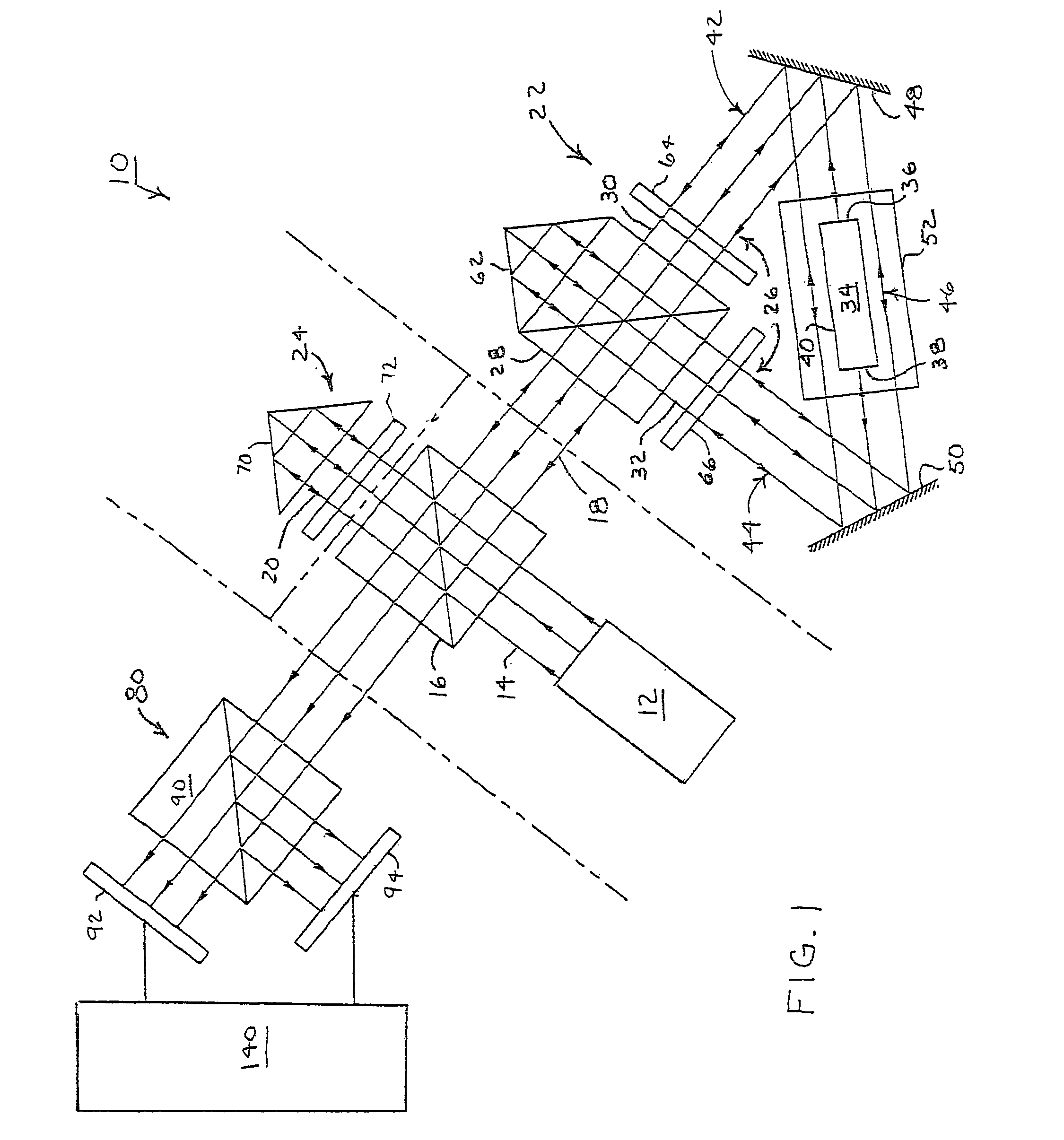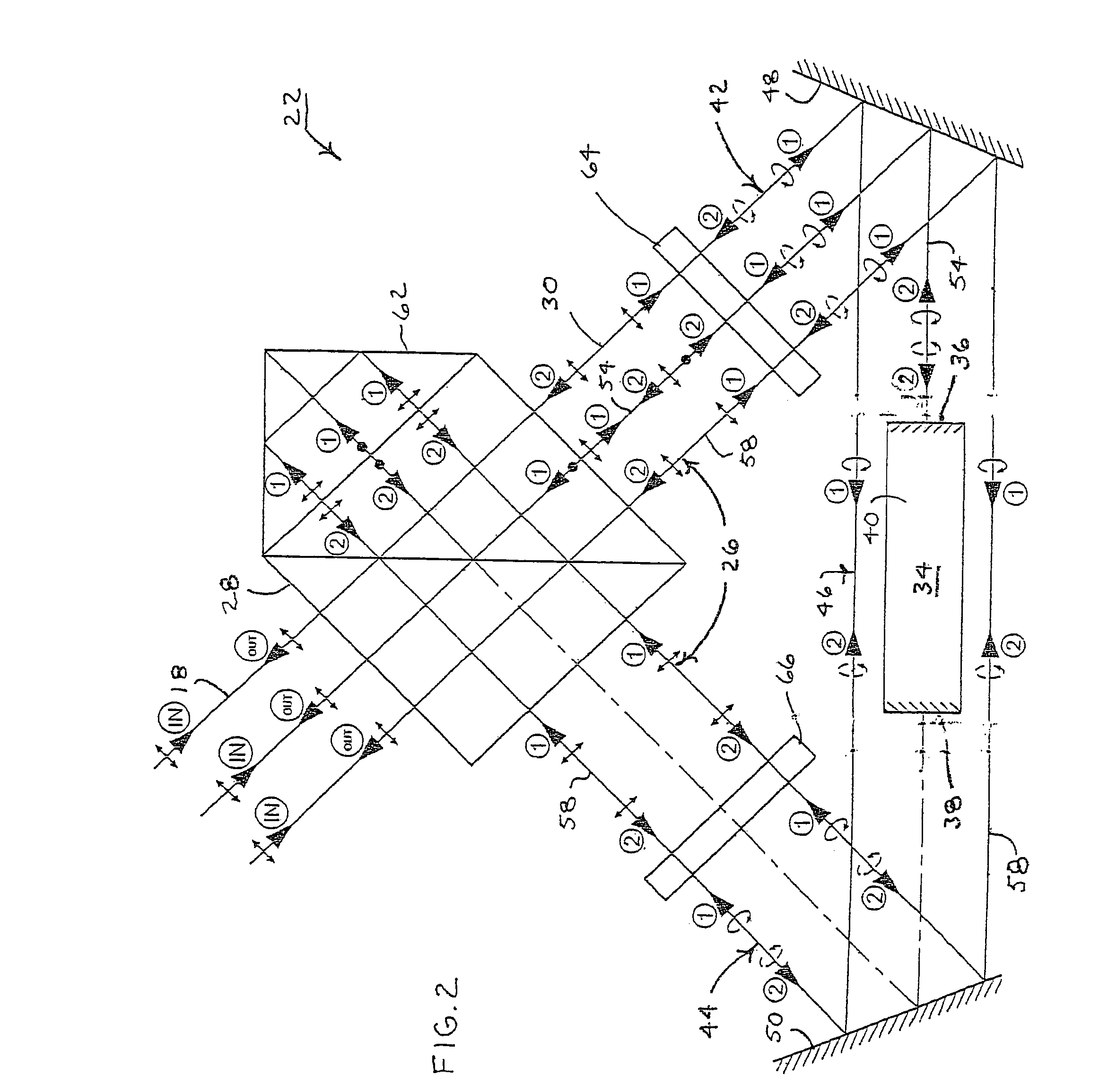Device for high-accuracy measurement of dimensional changes
a measurement device and high-accuracy technology, applied in the direction of measurement devices, instruments, interferometers, etc., can solve the problems of significant errors in the connection between the reference surface and the test material, the accuracy of dimensional change measurement is not high, and the thermally induced dimensional variation of the instrument (referred to as the device) is often nearly the same or even greater, so as to improve the accuracy of dimensional change measurement, improve the accuracy of estimating and compensating, and improve the accuracy of measurement accuracy
- Summary
- Abstract
- Description
- Claims
- Application Information
AI Technical Summary
Benefits of technology
Problems solved by technology
Method used
Image
Examples
Embodiment Construction
[0044]An exemplary device 10 laid out in FIG. 1 has the general configuration of a Michelson interferometer but is specially arranged for making heterodyne displacement measurements of ultra-low thermal expansion materials. Such materials generally exhibit thermal expansions of less than 30 parts per billion per degree centigrade.
[0045]A multi-frequency laser source 12 emits an expanded beam of light 14 having two primary frequencies (f1 and f2 ) that are linearly polarized in nominally orthogonal states (p and s). The laser is preferably a HeNe laser, such as a 7712 Laserhead from Zygo Corporation, emitting two primary frequencies (f1 and f2 ), which together exhibit a beat frequency of approximately 20 megahertz. Higher or lower beat frequencies can be used, since the expected rates of change intended for measurement are slow. The cost of electronic monitoring tends to decrease with lowered beat frequencies. The measurement resolution is set by the average of the two frequencies (...
PUM
| Property | Measurement | Unit |
|---|---|---|
| beat frequency | aaaaa | aaaaa |
| temperature | aaaaa | aaaaa |
| temperature | aaaaa | aaaaa |
Abstract
Description
Claims
Application Information
 Login to View More
Login to View More - R&D
- Intellectual Property
- Life Sciences
- Materials
- Tech Scout
- Unparalleled Data Quality
- Higher Quality Content
- 60% Fewer Hallucinations
Browse by: Latest US Patents, China's latest patents, Technical Efficacy Thesaurus, Application Domain, Technology Topic, Popular Technical Reports.
© 2025 PatSnap. All rights reserved.Legal|Privacy policy|Modern Slavery Act Transparency Statement|Sitemap|About US| Contact US: help@patsnap.com



